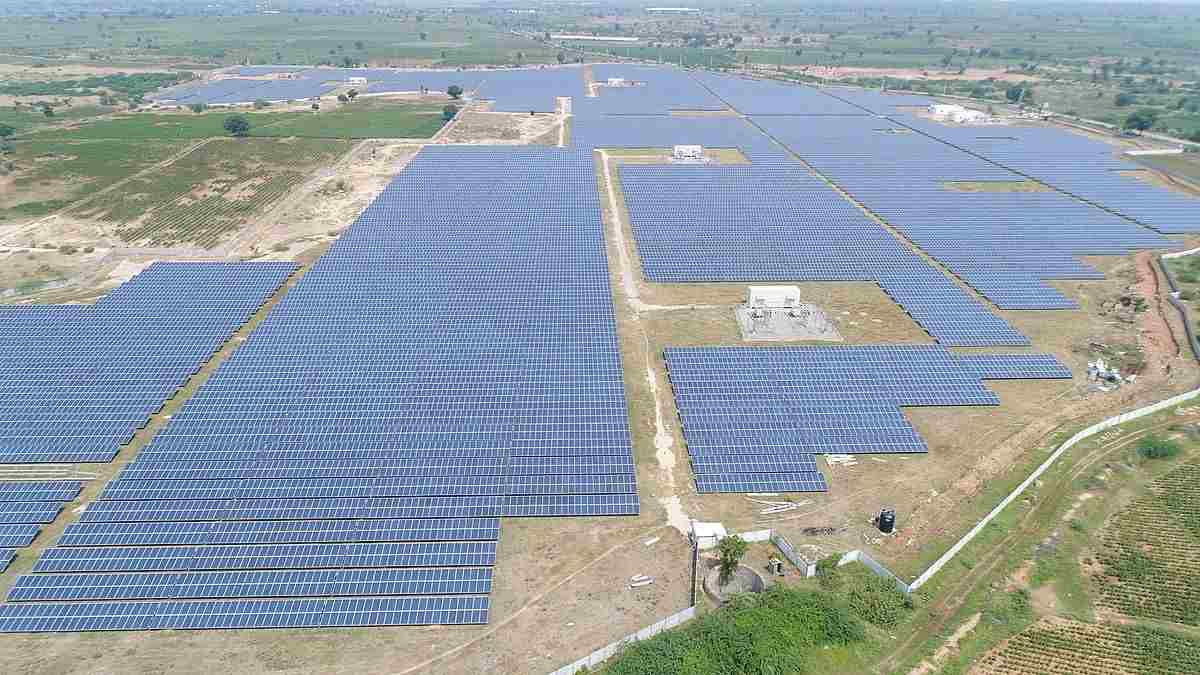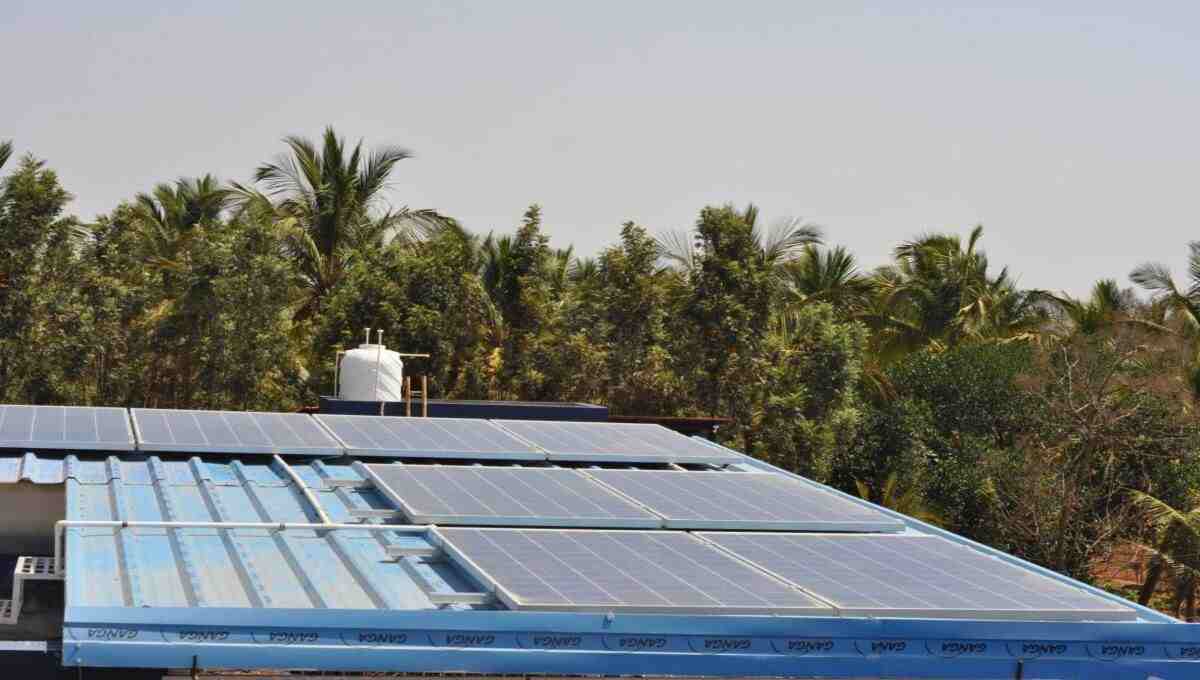Solar Energy Laws And Regulations In India

The cleanest form of energy is solar energy. Solar energy hardly negatively impacts the environment, and it is a form of renewable energy. As per the statistics of 2018, India ranked at third position in the list of best solar power after China and Japan. India has produced 27 GW and aims to create 100 GW by the end of 2022. The government of India has formulated several policies over the few decades, which indicate the intense dedication to having a sustainable and economical form of energy.
India is ranked third in Asia and fourth in the world regarding solar power production. India contains rich sources of energy that can help maximize solar energy and other types of renewable energies. With the establishment of the Commission of Alternate Sources (CASE) in 1981, which the Department of Science and Technology headed, the foundation for producing and utilizing solar energy was laid. The department was further named the Department of New Energy Sources (DNES) in 1982 and became a full-fledged ministry in 1992.
The current ministry that has the role of enforcing Renewable Energy Laws In India for solar energy is the Ministry of New and Renewable Energy (MNRE). The church's objective is to develop and deploy new and renewable energy. This renewable energy helps enhance the country's solar and other renewable sources. To promote the use of renewable energy, the government has provided various exemptions in indirect taxes, including sales tax, excise duty, and customs duty.
The Ministry of New and Renewable Energy stated that India had received about 5,000 trillion kWh of solar energy over its land. India has very few sources of fossil fuels which compels the country to be highly dependent on gulf countries. Solar energy can be the most secure source as it is abundant. In the current scenario, India is using 38% of the total solar capacity.
The first initiative towards the development and usage of solar energy was the National Solar Mission which was initiated in the year 2010. This development plan, also known as Jawaharlal Nehru National Solar Mission (JNNSM), was a part of the India National Plan on Climate Change (NAPCC). NAPCC is a mission-mode action for sustainable growth inaugurated by the Government of India in 2008. The primary objective is to promote the solar mission and make this energy source competitive with fossil fuels. The establishment of the solar research center development of solar technology with international collaboration on technology development took place to gain maximum government funding and international support.
The establishment of Solar Energy Corporation of India Ltd (SECI) comes under the administrative control of the MNRE. The setup was done on September 20, 2011. The project aims to facilitate the implementation of JNNSM and the achievement of targets set therein.
MNRE Guidelines For Solar Power Plant
The Ministry of New and Renewable Energy (MNRE) has issued various operational guidelines to implement the second phase of its grid-connected rooftop solar photovoltaic (PV) program. 22 GW of rooftop solar PV projects are set up under the second phase of this program.
The program aims to promote the domestic manufacturing of solar cells and modules. The program's target is to install 38 GW of rooftop solar by the end of 2022. Out of the total solar systems, 4 GW will be in the residential sector and 34 GW in other sectors, including government, commercial, industrial, and educational.
There are majorly two components in the program:
As per Component A, up to 4,000 MW of grid-connected rooftop solar projects will be done at the residential sector and will be set up with Central Financial Assistance (CFA), for which DISCOMs and its local offices will be the nodal points for the implementation of the program.
A CFA of up to 40% will be facilitated for rooftop solar PV systems with up to 3 kW capacity. For rooftop solar PV systems of power above 3 kW and up to 10 kW, a CFA of 40% will be applicable only for the first 3 kW capacity. The capacities that are above 3 kW, the limit of the CFA will be 20%.
For group housing societies and residential welfare associations under component A, the CFA will be limited to 20% for the installation of the rooftop solar PV project for the supply of power. The capacity eligible for the CFA will be limited to 10 kW per house and not more than 500 kW.
The role of the MNRE is to allocate the capacity for installing rooftop solar PV systems in the sector by DISCOM. One of the parameters for giving the power will be the demand raised by DISCOM and the capacity required to fulfill the state's solar renewable purchase obligations (RPO). DISCOMs will submit their yearly online proposal on the MNRE's SPIN portal by March.
The government-owned DISCOMs will be eligible to avail of an advance CFA of up to 30% of the total CFA amount for the project. However, in case of the requirement of the private DISCOMS, then it will be eligible to avail of an advance CFA upon the submission of a bank guarantee of an equivalent amount.
Under Component B, incentives to electricity distribution companies (DISCOMs) will be facilitated based on their achievement towards the initial 18,000 MW of grid-connected rooftop solar PV projects. Incentives will be given based on each MW capacity of solar rooftops added by DISCOMs in their distribution area over and above 10% of the base capacity installed at the end of the previous year.
Here, DISCOMs must submit the cumulative capacity of grid-connected rooftop solar PV projects (in MW) installed in their distribution area at the end of March each year. This will be the installed base capacity for the first year of participating DISCOMs. For the achievement above 10% and up to 15% over the installed base capacity, DISCOM will get an incentive of 5% of the applicable cost for the ability achieved above 10% of the installed base capacity. Beyond 15% and over achievements, the installed base capacity, the DISCOM will get 5% of the applicable cost for the ability achieved and an additional 10% of the fair price for power achieved beyond 15% of the installed base capacity.
The president of India, in March 2019, approved the launch of the second phase of the grid-connected rooftop solar PV program in India. The motive behind the launch of the project is to achieve the target of 40 GW of rooftop solar PV capacity by 2022. Under phase II, 38 GW of grid-connected rooftop solar PV capacity was expected to be installed. The central government had to provide ₹118.14 billion as central financial assistance (CFA) for capacity building, service charges, and incentives to distribution companies (DISCOMs).

Government Policies On Solar Energy
Electricity Act, 2003
The Electricity Act 2003 which is an essential Solar Energy Policy provides a framework for the overall growth of the electricity sector in India. The provisions are available in this act for preferential tariffs and quotas for opting for renewable energy. There are several mandatory renewable energy procurements for distribution licensees and the facilitation of grid connectivity.
National Electricity Policy, 2005
The National Electricity Policy of 2005 allows preferential tariffs for power produced from renewable energy sources. The policy's objective is to facilitate access to electricity for all. By the end of 2012, there was an increment in the minimum per capita availability to 1000 kWh.
Tariff Policy, 2006
Tariff Policy, 2006 is the Renewable Purchase Obligation (RPO) mechanism. This policy is incorporated to fix a minimum percentage of the purchase of energy consumption by the states from renewable energy sources. The tariff policy provides a special tax for solar energy, among other renewable energies.
Integrated Energy Policy, 2006
This Integrated Energy Policy, 2006 recommended a particular focus on renewable energy development. The role of the policy is to set specific targets for capacity addition.
National Action Plan on Climate Change (NAPCC), 2008
The primary mission of the National Action Plan on Climate Change (NAPCC) in 2008 was to intensify solar energy development. The Government of India intends to implement mission-mode action plans for sustainable growth under NAPCC to address climate change. The policy sets the RPO at 5% of the total grid's purchase and a decade-long 1% year-on-year RPO growth.
Generation Based Incentives (GBIs) for Solar
The introduction of Generation Based Incentives, GBI, was for small grid solar projects that lie below 33 kW. GBIs aims to bridge the gap between a base tariff of INR 5.5 and the tariff put in place by the Central Electricity Regulatory Commission (CERC) as a fiscal incentive.
Jawaharlal Nehru National Solar Mission (JNNSM), 2010
Jawaharlal Nehru National Solar Mission (JNNSM), 2010, is also known as National Solar Mission. JNNSM is one of the eighth fundamental National missions, which comprises India's NAPCC. The mission targets 20,000 MW of grid connection and off-grid solar power capacity by 2022, with 2000 MW as a share of off-grid capacity.
Renewable Energy Certificates (RECs), 2011
Renewable Energy Certificates (RECs), 2011 is a market-based mechanism. The policy was introduced to enhance the capacity of renewable energy. It standardizes the inter-state divergences of renewable energy generation and the requirement of the obligated entities to meet their RPOs with special pricing for solar and non-solar.
Clean Energy Cess, 2010
The Clean Energy Cess was launched to levy the amount of INR 50 for every tonne of coal used in the country. The cess has now grown to INR 400 per tonne of coal utilized. The Clean Energy Cess created the National Clean Energy Fund (NCEF) to fund clean energy projects. The policy facilitates up to 40% of the total costs of Renewable energy projects through the Indian Renewable Energy Development Agency (IREDA).
Joint Liability Group (JLG) for off-grid installations
By synthesizing business and social potential, a small group of 4–10 local entrepreneurs as JLG, helps avail the loans for non-farming activities. The structure can apply to microgrid installations.
Corporate Social Responsibility (CSR)
Corporate Social Responsibility is abbreviated as CSR; Corporate Social Responsibility was launched to encourage private sector participation in national growth and to meet social goals. The CSR funds are collected from the top 500 companies as 2% of their profits towards off-grid solutions.
Conclusion
The Government of India has recognized the energy and power sector as one of the crucial and key components of growth for the Indian Economy. It is also believed that India’s energy and power sector has a huge untapped potential for International investment. Schemes floated by the Government like DDUGJY (Deen Dayal Upadhyay Gram Jyoti Yojana) and IPDS (Integrated Power Development Scheme) coupled with approval of 100% FDI in the electrical machine industry have accounted for this huge growth in demand for electricity.
The Infrastructure sector is the key to the overall development of India’s economy and this sector holds massive potential as well. Sound decisions are required at every stage and aspect of an infrastructure project including the conceptualization stage, analyzing the risks involved, investment, contracting, energy management etc.

